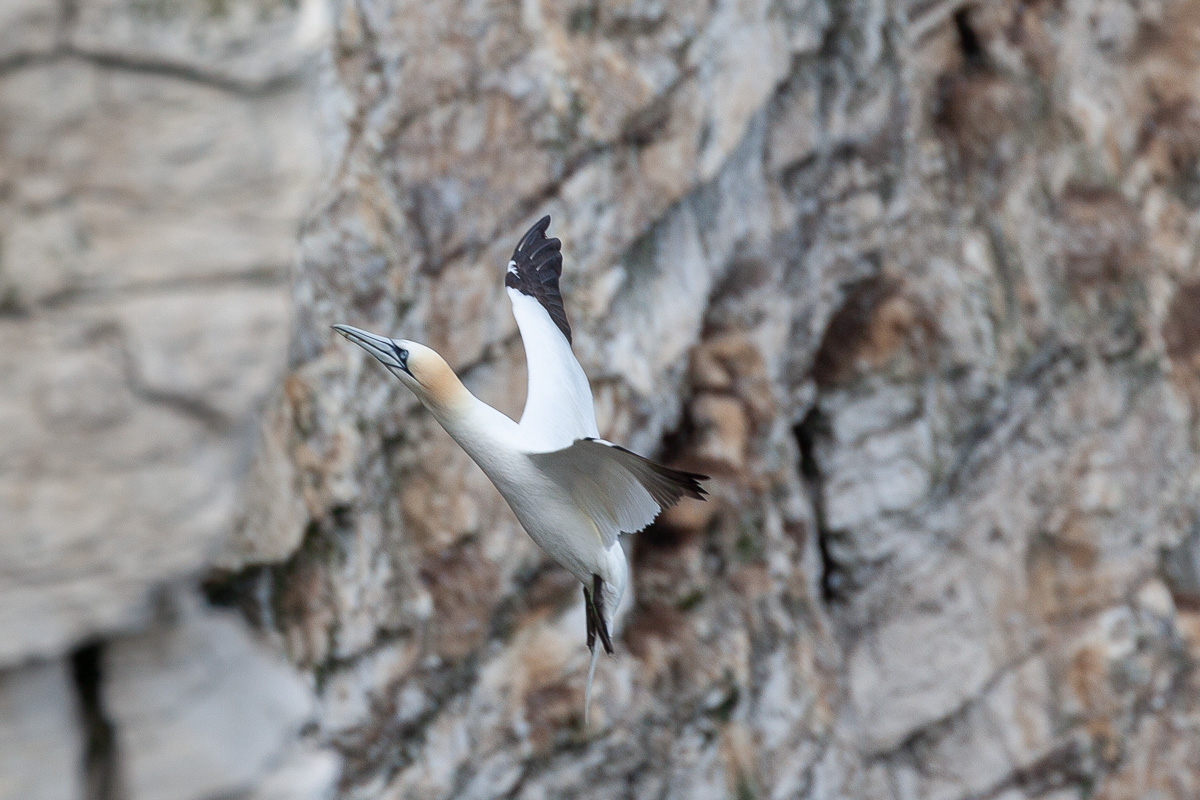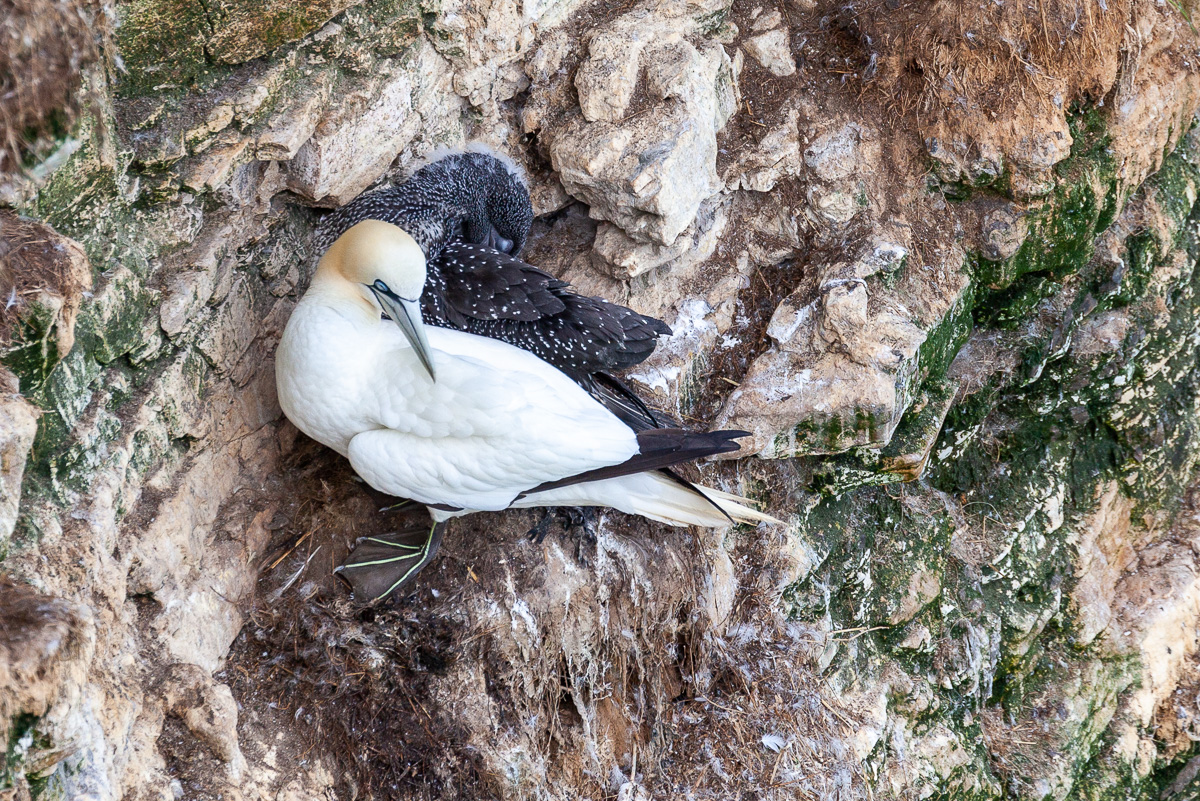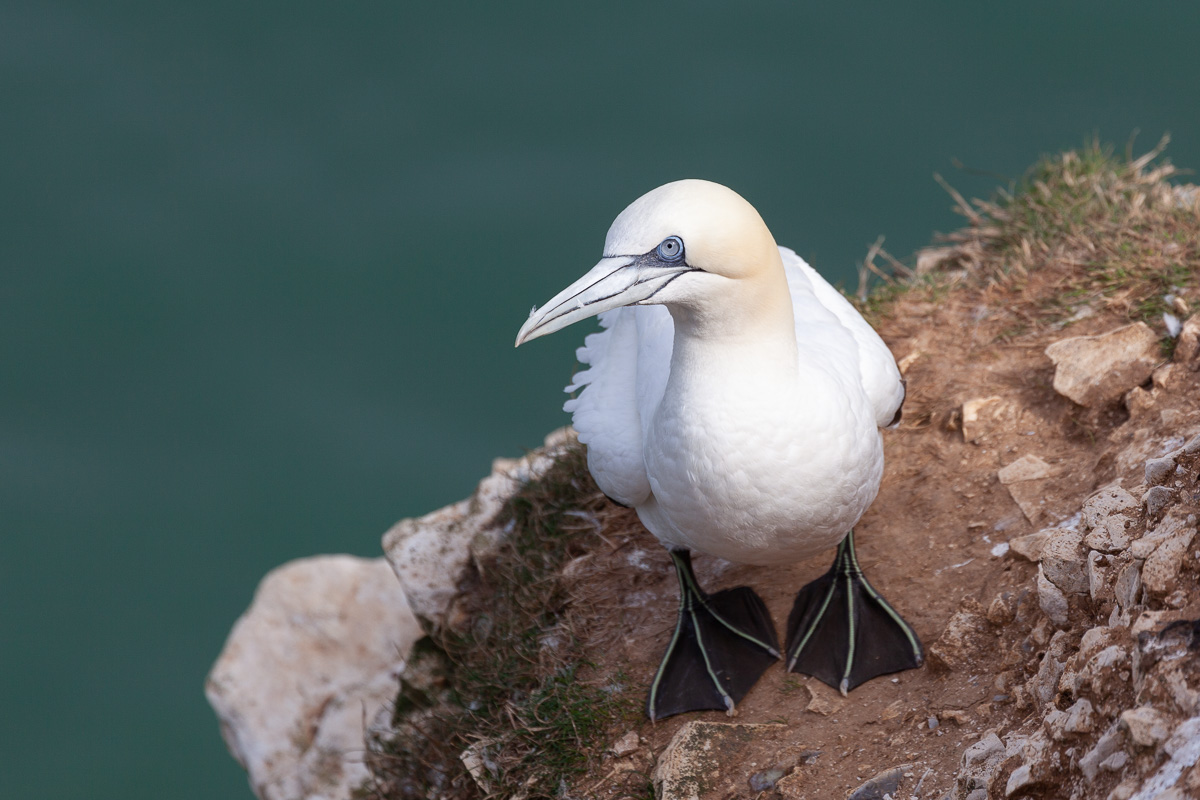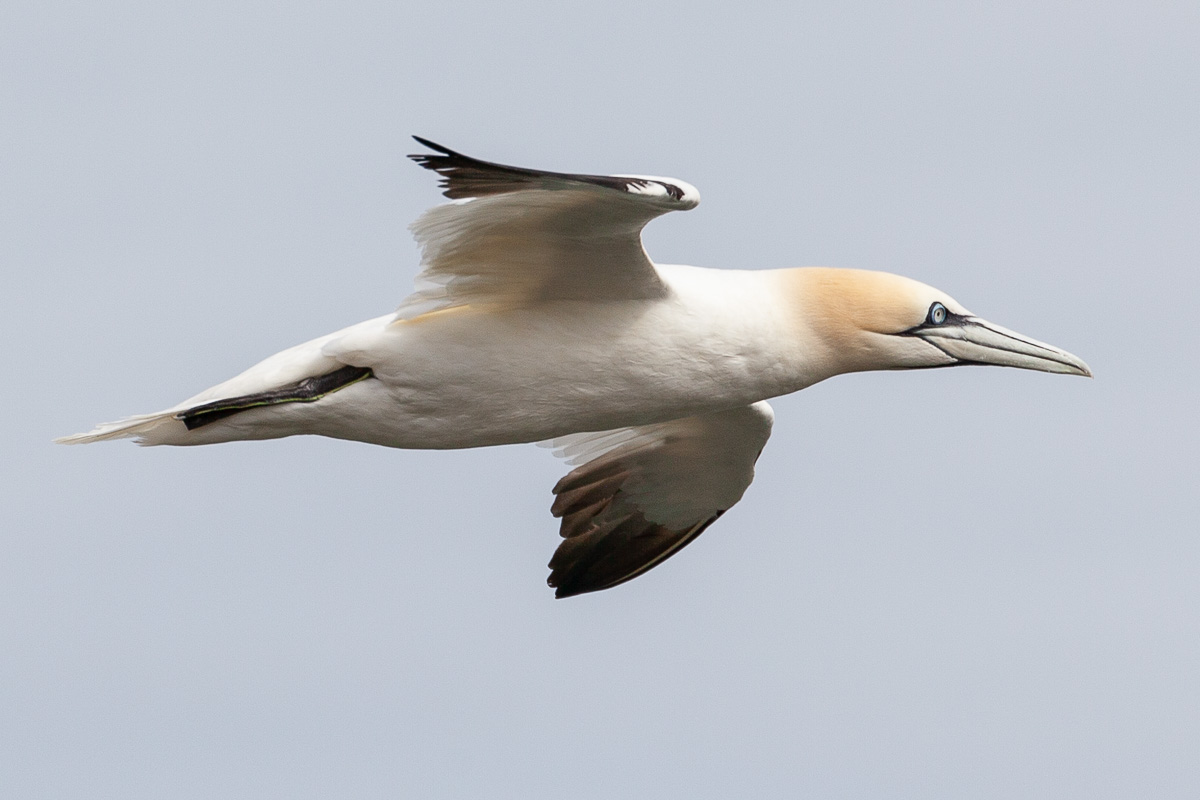· East Yorkshire ·
During a few days’ stay at her sister’s caravan near Filey, Jen and I drove a short distance down the coast to visit the RSPB reserve at Bempton Cliff’s: home of the UK’s only mainland gannetry.
The view from the clifftops were spectacular. V-formations of adults and juveniles were heading out to sea. Scores of other birds were circling off the cliffs before breaking away to make ambitious, often aborted landing attempts on narrow ledges. Ledge-space is at a premium, and neighbouring birds jealously guard their bijou real estate, repelling any interlopers that approach too close.

Jen and I last visited Bempton ten years ago, a couple of months earlier in the breeding season. Those extra weeks represented a considerable change in the life of the colony. Last time we were here, many pairs of adult gannets were still bonding or brooding their solitary eggs on cramped cliff-faces, while a few fluffy, white hatchlings could be seen here and there. This time, there were large, dark, brightly bespeckled young all over the place. These were mostly protected by lone parents, the other parents being away fishing for food. Young gannets are disconcertingly dinosaurian in appearance, and remarkably different in colouration to the brilliant-white adults. It takes several seasons for the full colour transformation to occur.

Up close, adult gannets are far more impressively coloured than the bright-white, black-wing-tipped birds seen from a distance. Their dark legs ad feet bear snazzy turquoise stripes along the ankles and toes. Their pale, sinister eyes are ringed with blue lids. Their sturdy, black-streaked, white dagger-beaks bear a hint of blue, lending them a metallic appearance. And the sides of their heads, their throats, and napes are stained with a hint of tobacco.

Up close, gannets are also rather smelly. I dare say all seabirds are, but when they’re gathered in such huge numbers, the effect borders on that of a good fertilizer—which is, of course, exactly how seabird guano was once used.
I’ve only just learnt that the word gannet comes from the same etymological source as gander—presumably on account of the gannet’s vaguely goose-like appearance. Both words are based on the Old English word ganot, meaning ‘strong’ or ‘masculine’. Which I guess just goes to prove, what’s source for the gannet is source for the gander.

Leave a Reply